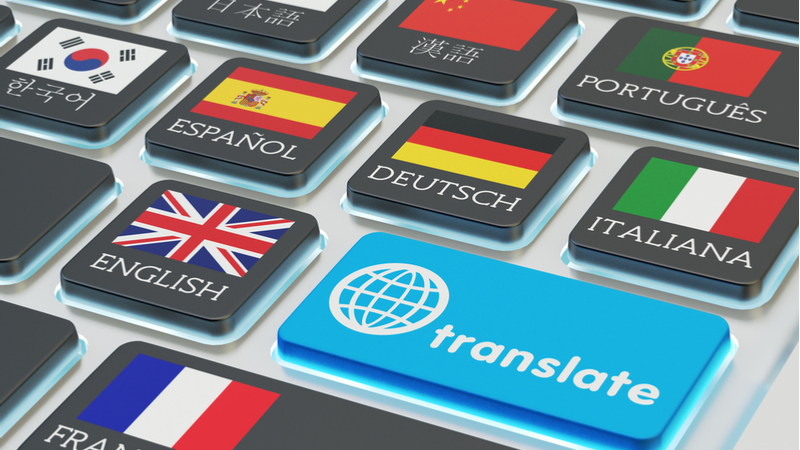1.1 — The Tools of Microeconomics
ECON 306 • Microeconomic Analysis • Fall 2020
Ryan Safner
Assistant Professor of Economics
safner@hood.edu
ryansafner/microF20
microF20.classes.ryansafner.com
Micro-economics

Micro- vs. Macro-economics
What is “an economy?”
Where do aggregates (“GDP”, “unemployment”, & “inflation”) come from?
Micro: [modelling] Choices and consequences
Macro: [modelling] Systemic interaction of choosers & emergent behavior

Where You Are Now
Basic concepts of markets, individuals (consumers & firms), economies:
- ECON 205: Principles of Macroeconomics
- ECON 206: Principles of Microeconomics
Modelling markets, individuals (consumers & firms), economies
- ECON 306: Microeconomic Analysis
- ECON 305: Macroeconomic Analysis1

Economists Speak a Foreign Language...
- Terms you “know” from ordinary life mean very different things to economists:
Cost, efficiency, welfare, competition, marginal, equilibrium, profit, public good, discrimination, elasticity
Using these words’ “ordinary” meanings will lead to wrong economic conclusions!
You will need to “relearn” the economic meanings of these words
...But You Can Learn It
- You’ll need to master a new vocabulary:
externality, marginal rate of substitution, marginal cost, consumer surplus, allocative efficiency
- Avoid excessive jargon, but these concepts are useful to explain reality!

...But You Can Learn It
Everyone thinks they are already an economist and can speak this foreign language
Be humble!
Economics is often common sense, but reached via deep analytical thinking

Economics \(\neq\) Business or $$$

Economics \(\neq\) Business or $$$

The Tools of Microeconomics
Economics as a Way of Thinking
- Economics is a way of thinking based on a few core ideas:
Economics as a Way of Thinking
Economics is a way of thinking based on a few core ideas:
People respond to incentives
- Money, punishment, taxes and subsidies, risk of injury, reputation, profits, sex, effort, morals

Economics as a Way of Thinking
Economics is a way of thinking based on a few core ideas:
People respond to incentives
- Money, punishment, taxes and subsidies, risk of injury, reputation, profits, sex, effort, morals
Environments adjust until they are in equilibrium
- People adjust their choices until optimal, given others’ actions


Incentives
Incentives Example: Rat Bounty
Some governments pay bounties to reduce pest populations such as rats.
Example: Suppose the government were to pay $250 for every rat tail turned in.
Incentives Example: Rat Bounty
Some governments pay bounties to reduce pest populations such as rats.
Example: Suppose the government were to pay $250 for every rat tail turned in.

Takeaways About Incentives I
People respond to (changes in) incentives
People have goals they seek to attain
Removing one alternative \(\neq\) people stop persuing their goals
People will seek (less preferred) alternative methods to attain goals
Unintended consequences!
Takeaways About Incentives II
Whenever I am working on policy decisions I think of this image... 🚴 ♂️ pic.twitter.com/GE3yyDmjs0
— Councillor Peter Fortune (@PeterTFortune) August 7, 2019
Equilibrium
Equilibrium Example I

Suppose 2 roads connect Frederick and Washington
100 cars commute
Local road travel time: 30 min + 1 min/car
Highway travel time: 1 hour (always)
Equilibrium Example I

Suppose 2 roads connect Frederick and Washington
100 cars commute
Local road travel time: 30 min + 1 min/car
Highway travel time: 1 hour (always)
Assume people optimize: choose road to minimize travel time between cities
Equilibrium Example II

Suppose 2 roads connect Frederick and Washington
100 cars commute
Local road travel time: 30 min + 1 min/car
Highway travel time: 1 hour (always)
Scenario I: There are less than 30 cars on the local road
- What will people do?
Equilibrium Example III

Suppose 2 roads connect Frederick and Washington
100 cars commute
Local road travel time: 30 min + 1 min/car
Highway travel time: 1 hour (always)
Scenario II: There are more than 30 cars on the local road
- What will people do?
Equilibrium Example IV

Suppose 2 roads connect Frederick and Washington
100 cars commute
Local road travel time: 30 min + 1 min/car
Highway travel time: 1 hour (always)
Equilibrium: How many cars are on each road?
- Why?
Equilibrium Example V

Suppose the State doubles the capacity of the local road
Local road travel time: 30 min + 0.5 min/car
Highway travel time: 1 hour (always)
Equilibrium Example V

Suppose the State doubles the capacity of the local road
Local road travel time: 30 min + 0.5 min/car
Highway travel time: 1 hour (always)
Will this reduce travel time?
Yes! says the State:
- 30 cars use the local road, takes 1 hour
- With wider road it takes 45 min!
Equilibrium Example V

Suppose the State doubles the capacity of the local road
Local road travel time: 30 min + 0.5 min/car
Highway travel time: 1 hour (always)
Will this reduce travel time?
Yes! says the State:
- 30 cars use the local road, takes 1 hour
- With wider road it takes 45 min!
Is this an equilibrium?
In the Long Run...(& Repeating the Same Mistake)
1970: One more lane will fix it.
— Urban Planning & Mobility 🚲🚶 ♂️🚆 (@urbanthoughts11) November 4, 2019
1980: One more lane will fix it.
1990: One more lane will fix it.
2000: One more lane will fix it.
2010: One more lane will fix it.
2020: ?pic.twitter.com/NjS1IPORG2
via @avelezig
Comparative Statics
- Comparative statics: examining changes in equilibria cased by an external change (in incentives, constraints, etc.)

Optimization and Equilibrium
If people can learn and change their behavior, they will always switch to a higher-valued option
If there are no alternatives that are better, people are at an optimum
If everyone is at an optimum, the system is in equilibrium


Economics Is Broader Than You Think

Real Talk: The Math
Real Talk

Real Talk

Real Talk

Real Talk

Complete the preliminary math survey
Help me help you with the math!
Why We Model I
Economists often “speak” in models that explain and predict human behavior
The pure language of models is mathematics
- things that are universally true, deducible from axioms, can easily spot errors
- often equations and graphs
- this is what scares students most about economics

Why We Model II
Economists use conceptual models: fictional constructions to logically examine consequences
Very different from other sciences
- No social experiments
- Purposive, strategic human beings
- Introspective understanding
“All models lie. The art is telling useful lies.” - George Box

The Two Major Models of Economics as a “Science”
Optimization
Agents have objectives they value
Agents face constraints
Make tradeoffs to maximize objectives within constraints

The Two Major Models of Economics as a “Science”
Optimization
Agents have objectives they value
Agents face constraints
Make tradeoffs to maximize objectives within constraints

Equilibrium
Agents compete with others over scarce resources
Agents adjust behaviors based on prices
Stable outcomes when adjustments stop

Remember: All Models are Wrong!
Caution: Don't conflate models with reality!
Models help us understand reality.
A good economist is always aware of:
- “ceterus paribus”
- “...and then what?”
- “...compared to what?”

Economics Uses, but Is Not Limited to, Math

About This Course
Logistics: Hybrid Course
hybrid: more synchronous material than asynchronous material
I will always be teaching remotely
- A classroom is available to you
- I may make occasional visits to campus if you need something in person (TBD)
Office hours: Tu/Th 3:30-5:00 PM on Zoom
- Zoom link in Blackboard's
LIVE CLASS SESSIONSlink - Slack channels
- Zoom link in Blackboard's
Teaching Assistant(s): TBD
- grade HWs & hold (likely virtual) office hours
Logistics: Hybrid Course
We will have synchronous sessions Mon/Wed 2:00-3:15 PM on Zoom
Lecture videos will be posted on Blackboard via Panopto for students unable to join synchronously
- If you were present, you do not need to watch the video (again)!
- You are not required to attend synchronously, but it will help you
All graded assignments are asynchronous
- (Probably) submitted on Blackboard by 11:59 PM Sundays
- (Probably) timed exams on Blackboard
Learning Goals
By the end of this course, you will:
apply the models of microeconomics (constrained optimization and equilibrium) towards explaining real world behavior of individuals, firms, and governments
explore the effects of economic and political processes on market performance (competition, market prices, profits and losses, property rights, entrepreneurship, market power, market failures, public policy, government failures)
apply the economic way of thinking to real world issues in writing
Assignments
| Assignment | Percent | |
|---|---|---|
| 1 | Opinion-Editorial | 20% |
| n | Homeworks (Average) | 20% |
| 3 | Exams | 20% each |
Your “Textbook”

Tips for Success, Or: How to College
Take notes. On paper. Really.
Read the readings.
Ask questions, come to office hours. Don’t struggle in silence, you are not alone!
You are learning how to learn
See the reference page for more

Roadmap for the Semester









